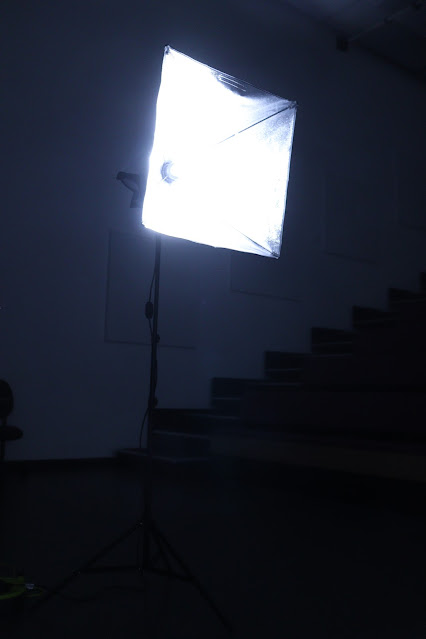P7: Apply Post-Production and Editing Techniques
P7: Apply Post-Production and Editing Techniques
In this report, I will explain how I have edited our music video. I will show what effects and transitions I used to create the video and how I have exported it. This is my completed Nightmare music video. I edited this using Adobe Premiere Pro since this is a professional software that they would use to edit in the media industry.
Here you can see I am setting up my Nightmare music video Premiere Pro file. As you can see, I haven't imported any folders or footage yet, I did this after creating the file by importing my media.
Editing Techniques
As you can see from the timeline, I have cut my footage down. Nightmare is a rock/punk song, it is fast paced and I used this to my advantage. I used the razor tool to do this. There are two main reasons I cut the footage the way it is. Firstly, this means that the footage matches the beat of the music and this makes the music video look more professional and it is effective. Secondly, this allowed me to create a more dramatic effect and show how the character is blacking out/feeling overwhelmed.
I have used the same effect for most of the choruses. As you can see, I have used basic correction and increased the temperature to create the red and yellow effect. To create the animated look, I increased the contast to 100, decreased blacks to and shadows to 0. This makes the shadows on the character very dark and blunt. I also used a vignette to make sure this effect is optimised, I put the amount and roundness of the vignette to 100. The end result of this editing makes the colours red, black and white stand out which fits the genre of the music.
For the verses, I decided to overlap two of the same clips using the layers option on the timeline. I did this by duplicating the clips using the alt key and dragging above the original clip. I chose to make this editing decision to make the video look hazy as if the character is in their nightmares and we are seeing it. On the clip above, I made the opacity 80% and used the screen blend mode. To make the video dark (to fit the genre of the music) I did some basic correction and did the following: made the contrast 10, highlights -70, shadows -85.6, whites and blacks -100. This made the colours in the video a bit mute and made the video darker. I also used the vignette tool for all of the verses clips and made the amount -3.0, midpoint 48.6 and feather 20. For the underneath layer, I also used the same lumetri colour corrections as the above clips. I used a gaussian blur and luma key for the above clips to make the video look hazy to simulate the nightmare.
Here you can see an affect I used for the first chorus. I used the lumetri colour/basic correction tools. I made the temperature 5 to create the red effect. I also made the highlights -56.8, shadows and blacks -100. This made blacks in the video stand out much more. I also created a spotlight styled effect using the vignette tool. I made the amount 3 and roundness 100 with 0 feather. As you can see, the end result looks like the video is very red with the clothes and makeup colours the character is wearing pop out and create a contrast in the video. The spotlight (created by the vignette) shows the character normally while the background outside of the spotlight looks rough, this is great since this matches the genre of the music.
I did not use any transitions for my music video since I used the black cuts as my main transitions. We also created our own transitions while filming the music video, you can see an example of this in the last chorus of our music video. We panned the camera right to create a transition to the next clip.
Exporting The Music Video
The screenshot above shows my export process. I named the file "Nightmare Music Video" so I am organising my files correctly and giving it an appropriate file name. I chose to export the Nightmare music video as a H.264 adaptive high bitrate. The high bitrate means that the effects added to the video are of the best quality and this also ensures that the audio is the best quality it can be. This is super important since this is a music video so the video relies on the audio. The H.264 file format used lossless compression. This means that my music video will be compressed to a smaller file size without loosing video or audio quality. This is essential to ensure that I present the best music video I possibly can.
To conclude, I have showed you how I used different techniques in Adobe Premiere Pro to create the final music video. I have presented screenshots and explained them to support my report.
.png)
.png)
.png)
.png)
.png)
.png)
.png)
.png)
.png)
.png)
.png)
.png)
.png)
.png)

Comments
Post a Comment